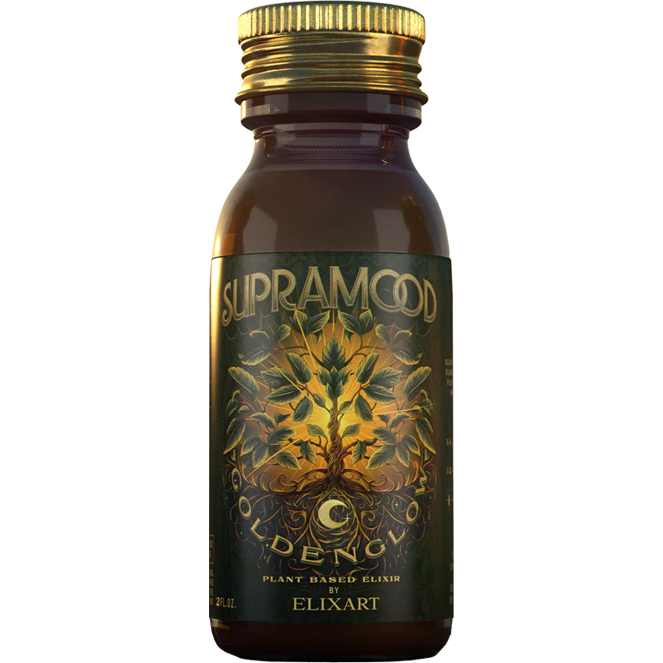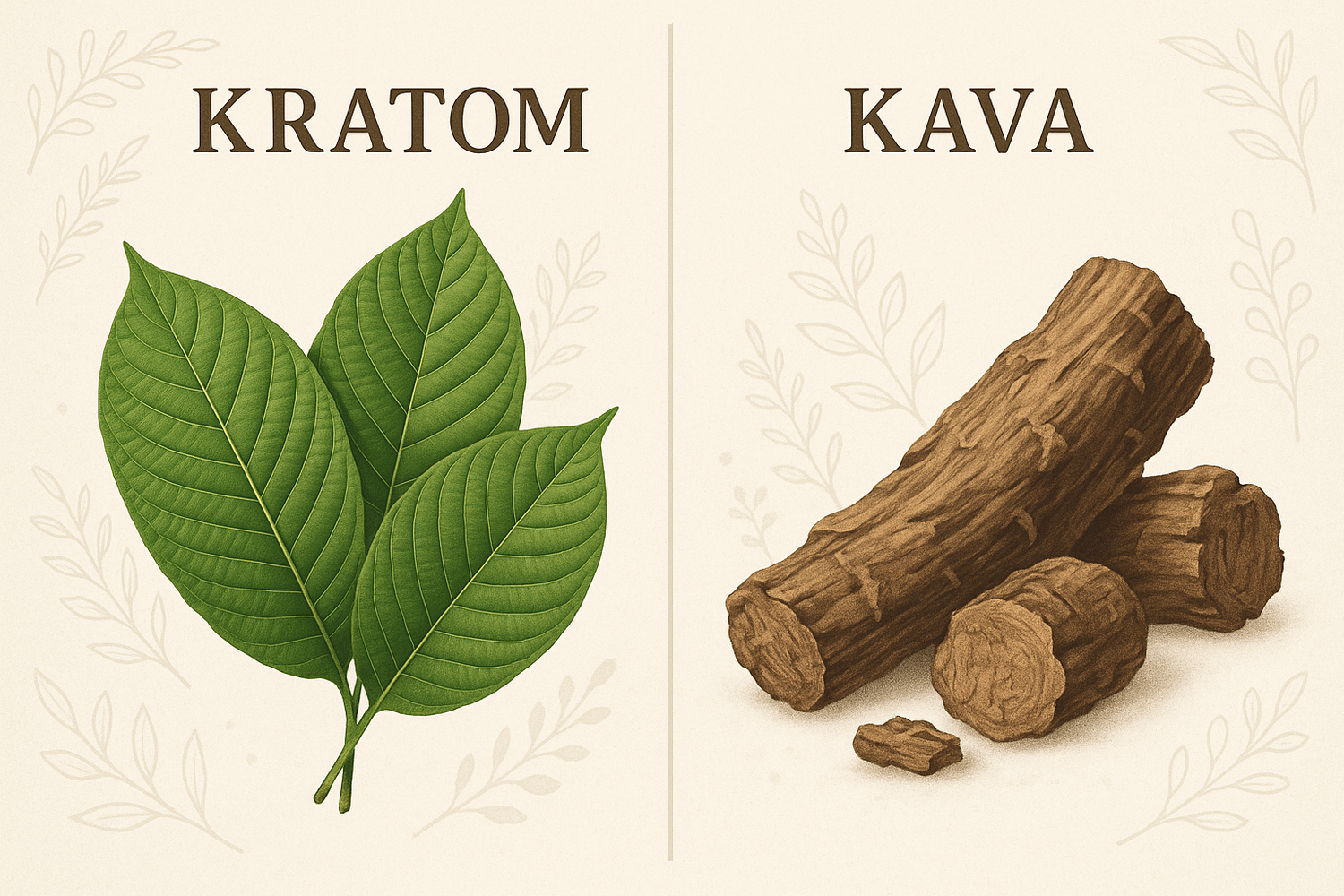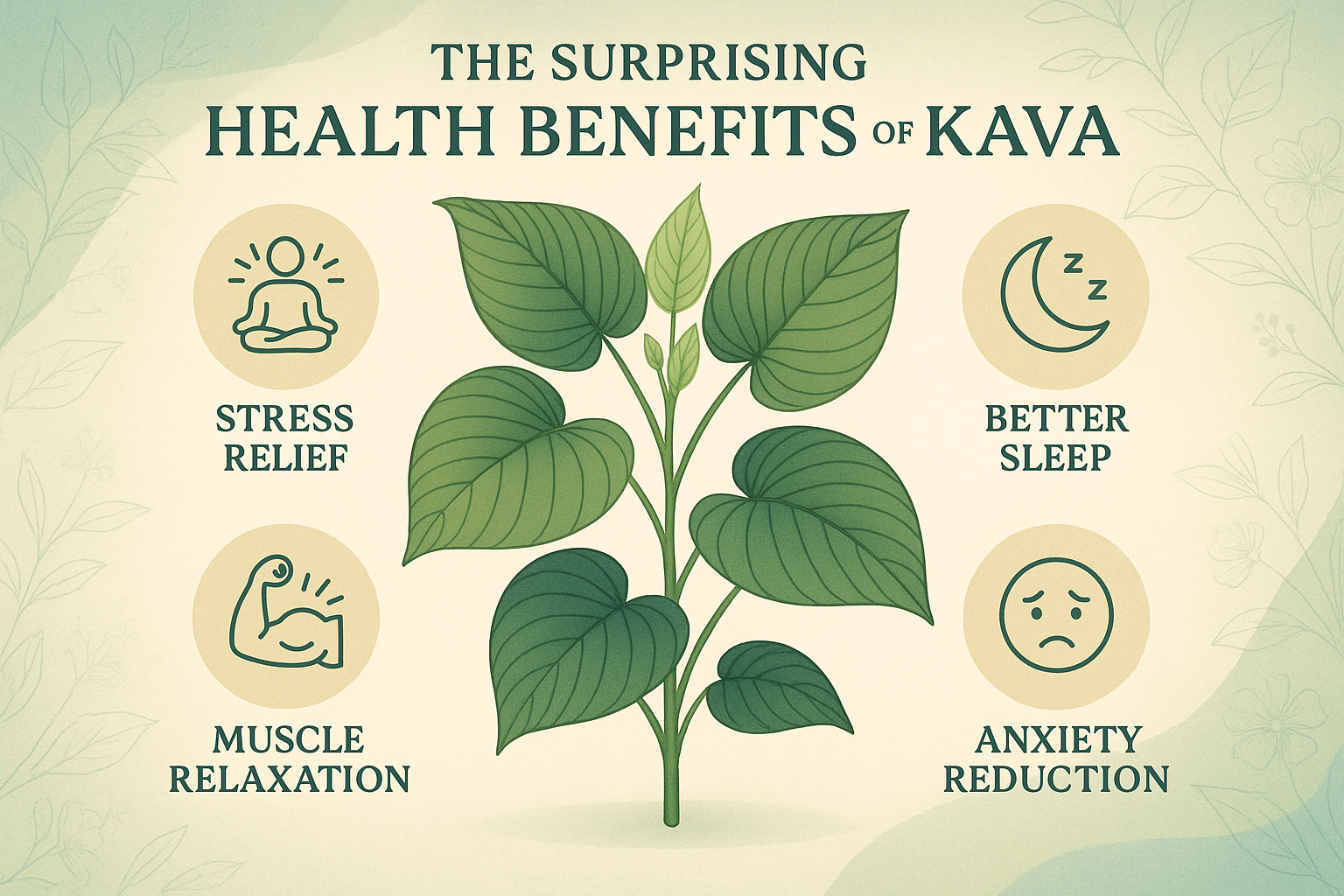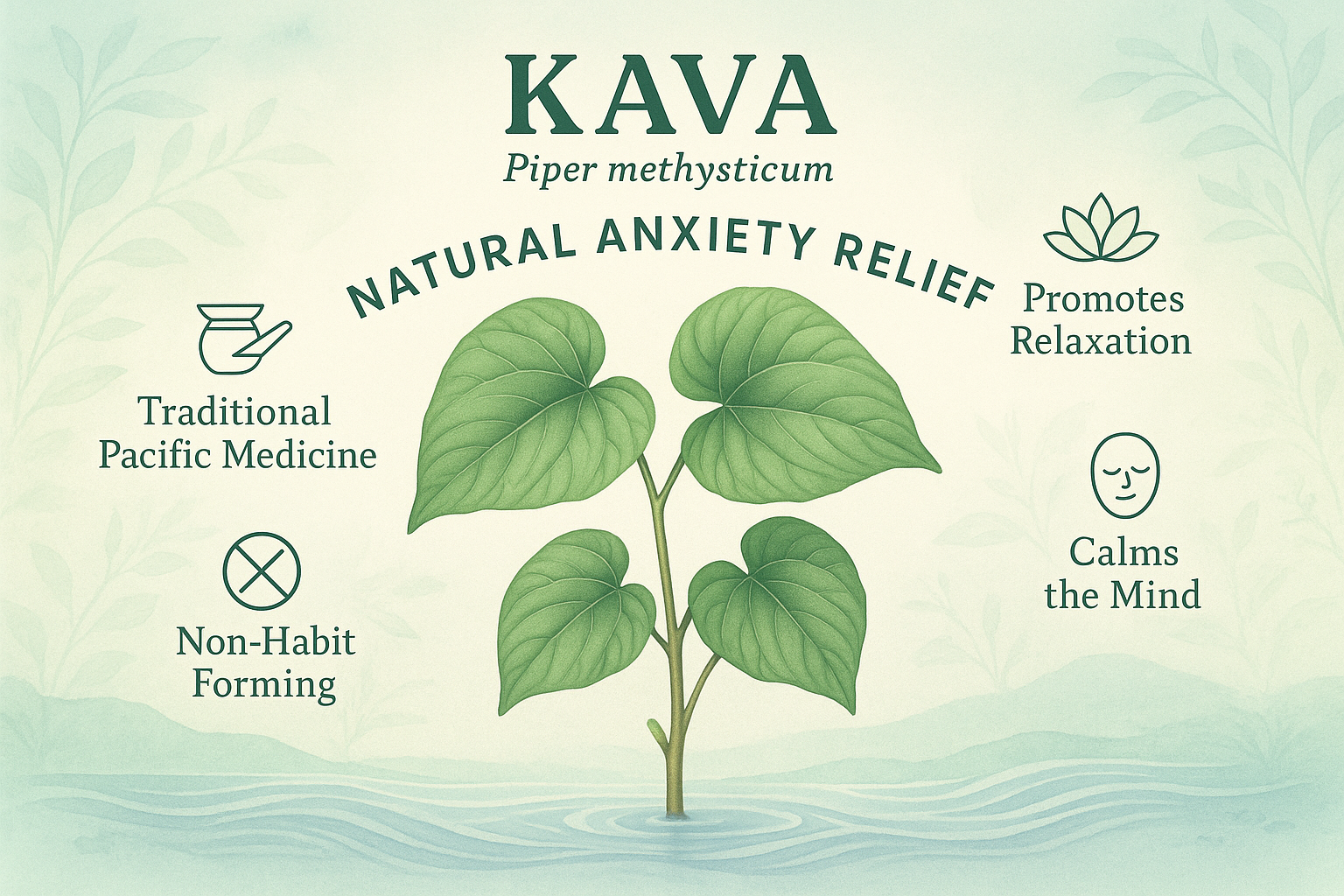Kratom vs. Kava: Which Herbal Remedy is Right for You? This question often arises as both kratom and kava have gained popularity for their unique effects and uses. Derived from different plants, these herbal remedies offer distinct benefits that cater to various needs.
Kratom (Mitragyna speciosa) is renowned for its dual nature, providing stimulant effects at lower doses and sedative effects at higher doses. It's commonly used to alleviate pain, reduce anxiety, and assist with opioid withdrawal.
Kava (Piper methysticum), on the other hand, is celebrated for its calming properties, primarily used to relieve stress and promote relaxation. Its consumption has deep cultural roots in the South Pacific islands where it originated.
Understanding these herbal remedies is crucial. Each has its own set of benefits and risks, making it important to choose the right one based on your individual needs. Educating yourself about their chemical compositions, potential side effects, and proper usage can help you make an informed decision.
The comparison between kratom vs. kava will delve into these aspects, offering insights to guide you through selecting the most suitable option for your wellness journey.
Understanding Kratom
Kratom (Mitragyna speciosa) is a tropical evergreen tree native to Southeast Asia, particularly Thailand, Indonesia, and Malaysia. The local populations have used its leaves for centuries due to their stimulant and sedative properties.
Chemical Composition and Active Compounds
The primary active compounds in kratom are alkaloids, with the most notable being mitragynine and 7-hydroxy mitragynine. These alkaloids interact with opioid receptors in the brain, producing effects similar to both stimulants and sedatives depending on the dosage.
- Mitragynine: Predominant alkaloid known for its stimulating effects at lower doses.
- 7-Hydroxy Mitragynine: More potent than mitragynine, contributing significantly to kratom's analgesic and sedative properties.
Different Forms of Consumption
Kratom is available in various forms to suit different preferences:
- Powders: Made by grinding dried kratom leaves, often mixed with beverages for easier consumption.
- Capsules: Encapsulated powder for convenience and precise dosing.
- Teas: Brewed from kratom leaves or powder, a traditional method of consumption in Southeast Asia.
Understanding these aspects provides insight into kratom’s versatility and wide-ranging effects. This background is crucial when evaluating its benefits and risks.
Benefits and Risks of Kratom
Stimulant Effects at Lower Doses, Sedative Effects at Higher Doses
Kratom's unique quality among herbal remedies is its ability to produce different effects based on the dosage consumed. At lower doses, you may experience stimulant effects such as increased energy, enhanced mood, and improved focus. This is attributed to the alkaloid mitragynine, which interacts with adrenergic receptors in the brain.
On the other hand, higher doses shift Kratom's impact towards sedation. The alkaloid 7-hydroxy mitragynine binds to opioid receptors, producing effects similar to opioids such as euphoria and pain relief.
Use in Pain Management and Opioid Withdrawal Support
Kratom has gained attention for its potential in pain management. Its analgesic properties make it a popular alternative for those seeking non-pharmaceutical pain relief. Additionally, some individuals use Kratom to support opioid withdrawal. Its opioid-like effects can alleviate withdrawal symptoms, making the transition off opioids less severe.
Potential for Addiction and Withdrawal Symptoms
Despite its benefits, Kratom carries a risk of addiction. Due to its interaction with opioid receptors, prolonged use can lead to dependence. Users may experience withdrawal symptoms such as irritability, insomnia, and muscle aches upon cessation.
Risks Associated with High Doses (Respiratory Depression)
High doses of Kratom come with significant risks, including respiratory depression. This condition reduces the ability to breathe effectively and can be life-threatening. It's essential to adhere to recommended dosages and consult healthcare providers before use.
Understanding these aspects helps you make an informed decision about incorporating Kratom into your wellness routine while being aware of potential pitfalls.
Understanding Kava
Kava, scientifically known as Piper methysticum, is a plant native to the South Pacific islands. Traditionally, it has been used in cultural and social rituals across Polynesia, Micronesia, and Melanesia for its calming and sedative properties.
Chemical Composition and Active Compounds
The primary active compounds in kava are kavalactones. These compounds interact with GABA receptors in the brain, which helps to reduce anxiety and promote relaxation. There are six major kavalactones identified:
- Kavain
- Dihydrokavain
- Methysticin
- Dihydromethysticin
- Yangonin
- Desmethoxyyangonin
Each of these plays a role in the overall effects of kava on the body.
Forms of Consumption
Kava is commonly consumed in two main forms:
- Drinks: Traditional preparation involves grinding the root into a fine powder, mixing it with water, and straining it to create a beverage.
- Supplements: Modern consumption includes capsules or tablets containing kava extract, making it more convenient for users who may not enjoy the taste of traditional kava drinks.
Both forms offer similar benefits but vary in their ease of use and potency.
Benefits and Risks of Kava
Kava, known for its anxiolytic properties, interacts with GABA receptors in the brain to produce calming effects. This interaction makes kava effective for stress relief and promoting relaxation.
Key Benefits
- Anxiolytic Properties: By interacting with GABA receptors, kava reduces anxiety and stress, offering a natural way to calm the mind.
- Promotes Relaxation: Kava's calming effects make it popular for social settings where relaxation is desired.
- Non-Addictive: Unlike some other herbal remedies, kava doesn't carry a significant risk of addiction when used responsibly.
Potential Risks
While kava has many benefits, it's essential to be aware of its risks:
- Liver Damage: One of the most significant concerns is kava liver toxicity. High doses or frequent use can lead to liver injury.
- Other Side Effects: Common side effects include dizziness, headache, and gastrointestinal issues. Some users may also experience allergic reactions.
Summary of Side Effects
- Mild Effects: Drowsiness, dizziness, and gastrointestinal discomfort.
- Severe Effects: Potential liver damage with excessive use.
Understanding these benefits and risks helps you make informed choices about incorporating kava into your wellness routine.
Comparing Kratom and Kava
Differences in Chemical Composition and Effects on the Body
Kratom contains mitragynine and 7-hydroxy mitragynine, alkaloids that interact with opioid receptors, producing stimulant or sedative effects depending on the dosage. Low doses lead to heightened alertness and energy, while higher doses can result in sedation and pain relief similar to opioids.
Kava, on the other hand, is rich in kavalactones, compounds that primarily affect GABA receptors, leading to relaxation and anxiolytic effects without significant sedation. This makes kava particularly useful for reducing anxiety and promoting social ease.
Comparison of Risks Associated with Each Herbal Remedy
When you compare Kratom and Kava, their risk profiles are quite distinct:
Kratom Risks:
- Potential for Addiction: Regular use can lead to dependence and withdrawal symptoms.
- Respiratory Depression: High doses can dangerously slow respiration.
- Legal Issues: Faces regulatory scrutiny in various regions due to its opioid-like effects.
Kava Risks:
- Liver Damage: Prolonged or high-dose usage can cause hepatotoxicity.
- Other Side Effects: May include gastrointestinal discomfort, headaches, and dizziness.
Both herbal remedies offer unique benefits but come with their own set of risks. Understanding these differences is crucial for making informed decisions about their use.
Usage Guidelines for Each Herbal Remedy
Recommendations for Safe Usage of Kratom
When considering how to use Kratom safely, it's crucial to follow dosage guidelines and understand your body's tolerance. Here are some recommendations:
- Start Low: Begin with a low dose, typically between 1-2 grams. This helps gauge how your body reacts without overwhelming your system.
- Moderate Dosage: For moderate effects, doses of 3-5 grams are common. This range can help with pain management and mild anxiety relief.
- Higher Dosage: Doses above 5 grams can produce sedative effects but increase the risk of side effects such as nausea or dizziness. Only consider higher doses if lower doses are ineffective and always under supervision.
- Frequency: Limit usage to avoid dependency. Using Kratom more than three times per week increases the risk of developing tolerance and potential addiction.
- Hydration: Kratom can be dehydrating, so ensure you drink plenty of water.
Suggestions for Responsible Kava Consumption
For those seeking safe herbal remedies for anxiety, Kava offers a viable option. Here are guidelines for responsible consumption:
- Serving Size: A typical dose is around 70-250 mg of kavalactones per day, depending on the product's concentration. Always start at the lower end to assess tolerance.
- Preparation: Traditional Kava drinks involve mixing powdered root with water. Ensure proper straining to remove plant fibers that can cause gastrointestinal discomfort.
- Supplement Form: Capsules or tablets provide a consistent dose but verify potency and purity from reputable sources.
- Usage Frequency: To minimize risks, limit Kava use to no more than three times per week. Regular breaks from consumption help prevent potential liver issues.
- Avoid Alcohol and Medications: Combining Kava with alcohol or certain medications can exacerbate liver stress.
Understanding these guidelines helps ensure that both Kratom and Kava are used effectively and safely, aligning with your personal health goals.
Research on Herbal Supplement Safety
Overview of Current Research Findings
Scientific research on herbal supplements like kratom and kava has been expanding, providing valuable insights into their safety profiles.
Kratom Research Findings
Studies highlight kratom's potential benefits in pain management and opioid withdrawal support. However, research also underscores the risks associated with its use, including addiction and severe withdrawal symptoms. High doses have been linked to respiratory depression, which can be life-threatening. Despite these findings, there is still a need for more comprehensive research to fully understand kratom's long-term effects and safety.
Kava Research Findings
Kava has been extensively studied for its calming effects and ability to promote relaxation. Research indicates that kava can effectively reduce anxiety without the risk of addiction. However, concerns about liver toxicity have been raised, especially with long-term or high-dose use. Ongoing studies aim to determine safe consumption guidelines and understand the full spectrum of kava's impacts on liver health.
Importance of Scientific Studies in Evaluating Efficacy
Scientific studies play a crucial role in evaluating the efficacy and safety of herbal supplements like kratom and kava.
"Research provides a foundation for understanding how these herbs interact with the body and what potential risks they carry."
Key reasons why scientific research is essential:
- Evidence-Based Safety Profiles: Research helps identify potential side effects, toxicities, and interactions with other substances.
- Standardized Dosage Guidelines: Establishing safe dosage ranges prevents misuse and minimizes health risks.
- Efficacy Validation: Confirming the therapeutic benefits ensures that users can make informed decisions based on reliable data.
- Regulatory Guidance: Scientific evidence supports regulatory bodies in creating guidelines for safe usage and distribution.
Investment in more extensive studies will ensure that both kratom and kava can be used safely while maximizing their therapeutic potentials.
Conclusion
Choosing between Kratom and Kava depends on your personal health considerations and desired effects. Kratom offers both stimulating and sedative properties, making it versatile for managing pain or enhancing energy. However, its potential for addiction and withdrawal symptoms requires cautious use.
Kava provides calming effects ideal for relaxation and social enjoyment without the risk of dependence. Yet, high doses can lead to liver damage, so responsible consumption is crucial.
Kratom vs. Kava: Which Herbal Remedy is Right for You?
- Kratom: Best if you seek pain management or an energy boost but be mindful of addiction risks.
- Kava: Optimal for stress relief and social relaxation with a lower dependency risk.
Evaluate your health needs and consult healthcare professionals to determine the most suitable option.
FAQs (Frequently Asked Questions)
What is Kratom and how is it consumed?
Kratom, derived from the Mitragyna speciosa tree, contains active compounds like mitragynine and 7-hydroxy mitragynine. It can be consumed in various forms including powders, capsules, and teas.
What are the benefits and risks associated with Kratom?
Kratom may provide pain relief and anxiety treatment, but it also carries risks such as potential addiction, respiratory depression at high doses, and withdrawal symptoms.
What is Kava and what are its effects?
Kava, sourced from the Piper methysticum plant, contains kavalactones which have anxiolytic properties. It promotes relaxation and stress relief but can lead to liver injury with excessive use.
How do Kratom and Kava compare in terms of safety?
Both herbal remedies have distinct chemical compositions and effects on the body. While Kratom poses risks of addiction and respiratory issues, Kava may cause liver damage with high doses. Understanding these differences is crucial for safe usage.
What are the recommended guidelines for using Kratom safely?
For safe usage of Kratom, it is important to adhere to dosage guidelines and monitor for any adverse effects. Responsible consumption helps mitigate risks associated with this herbal remedy.
How can I choose between Kratom and Kava for my needs?
Choosing between Kratom and Kava should be based on personal health considerations and desired effects. Assess your individual needs regarding pain management or relaxation to determine which herbal remedy may be more suitable.







Leave a comment
This site is protected by hCaptcha and the hCaptcha Privacy Policy and Terms of Service apply.